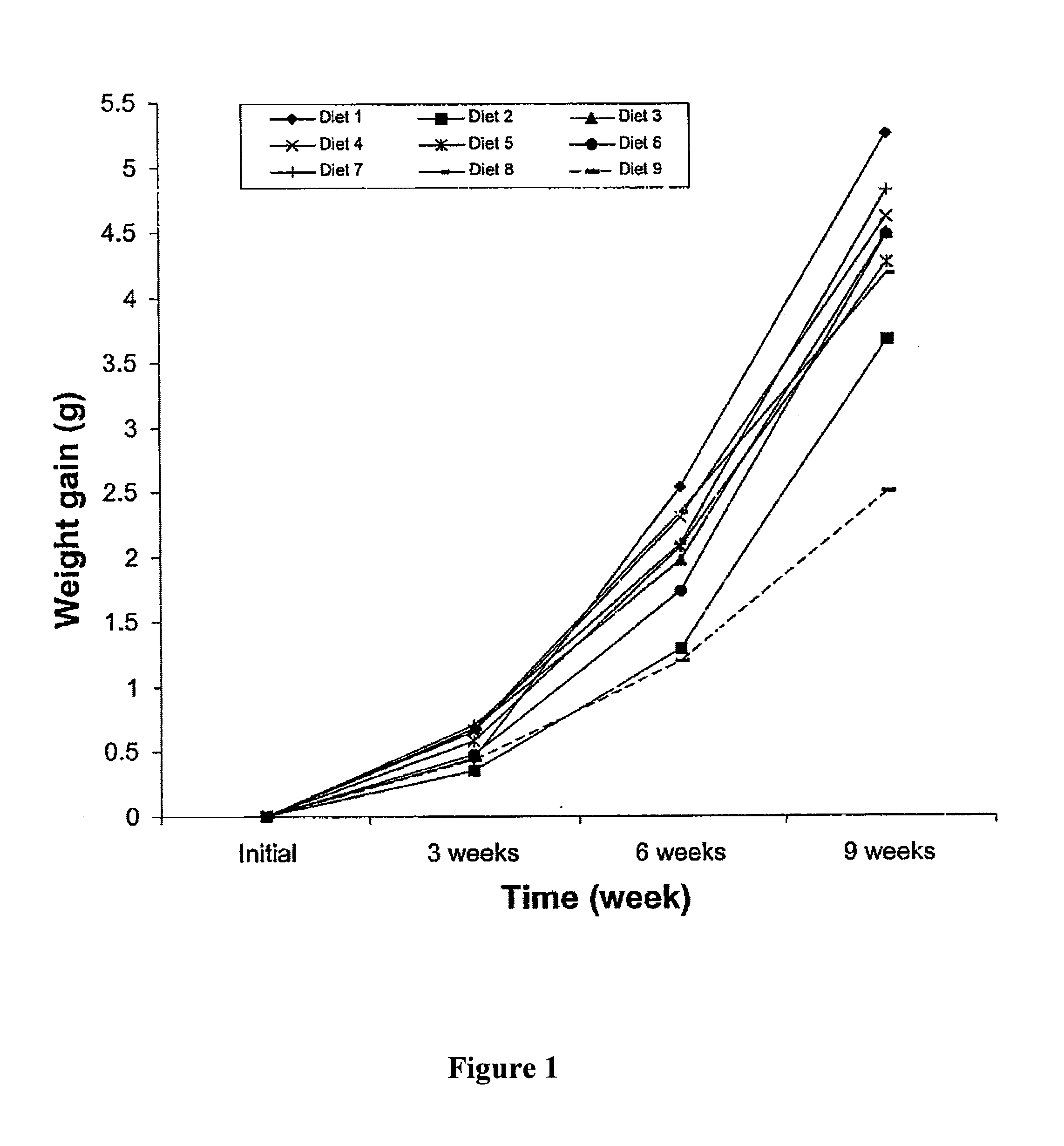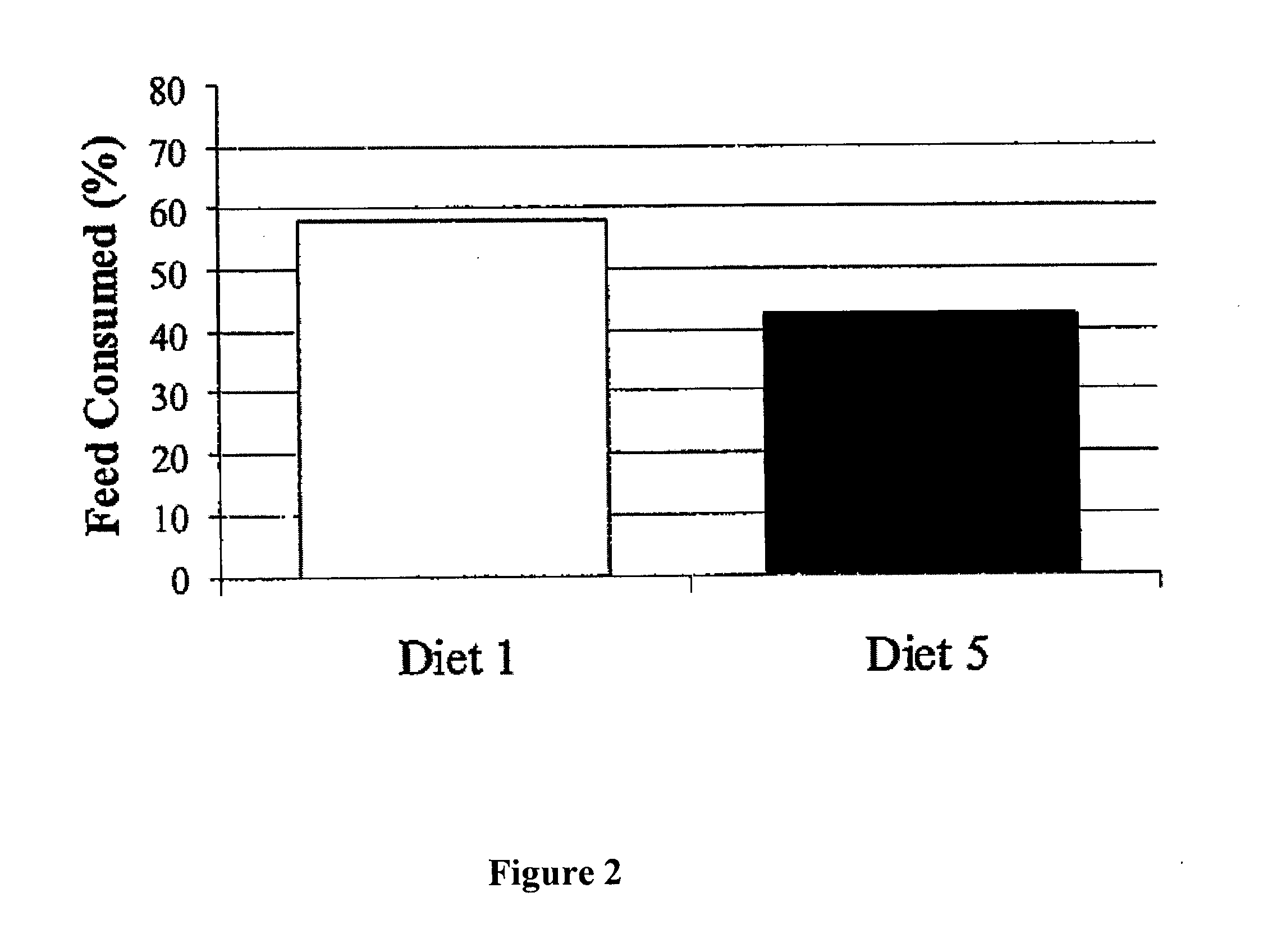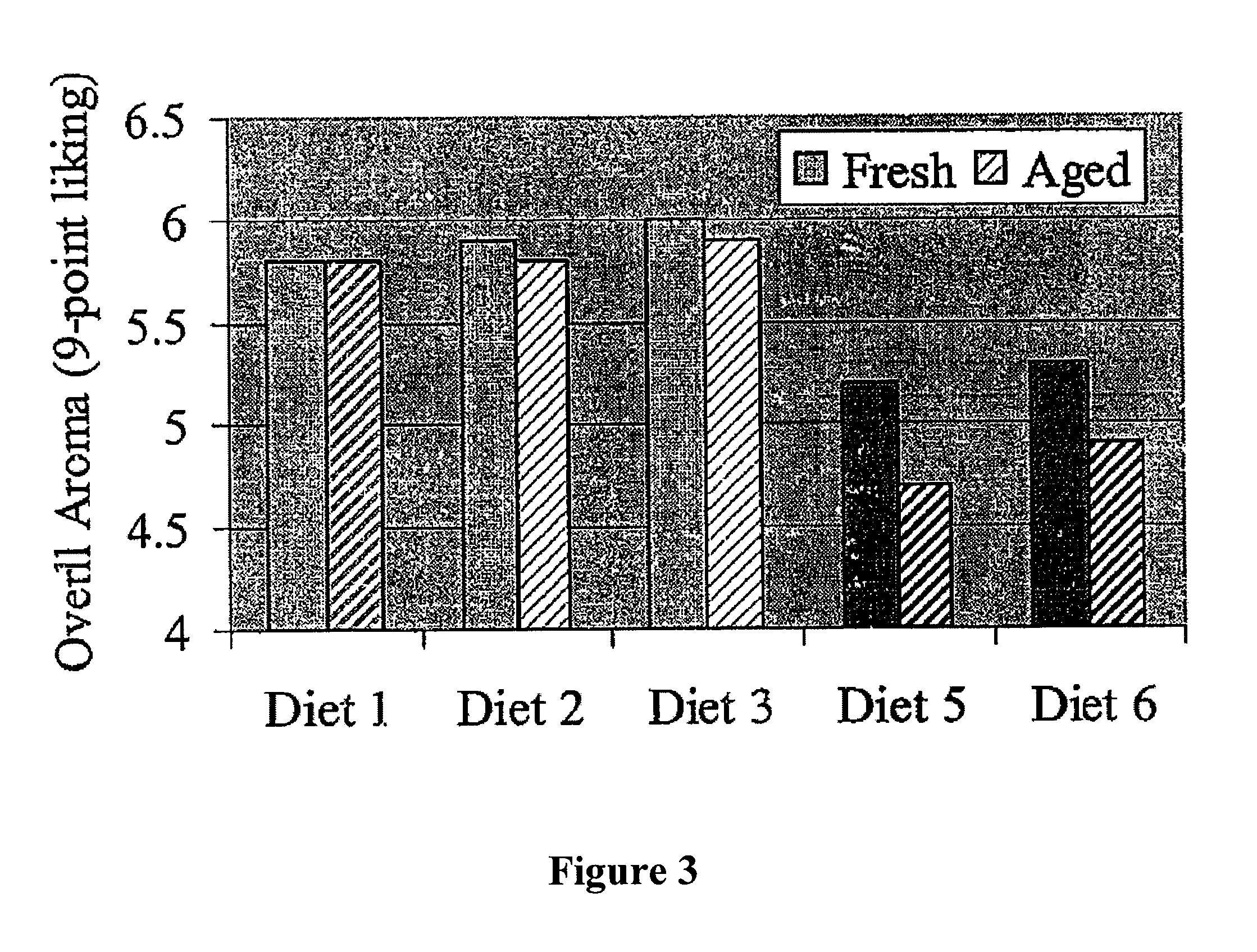Feed formulations containing docosahexaenoic acid
a technology of docosahexaenoic acid and feed formulation, which is applied in the field of feed formulations containing docosahexaenoic acid, can solve the problems of significant human public health problems, affecting fisheries, and affecting the health of fisheries, so as to eliminate any possibility of vertical or horizontal disease transmission, optimal neurological development of the mammal, and the effect of optimal neurological developmen
- Summary
- Abstract
- Description
- Claims
- Application Information
AI Technical Summary
Benefits of technology
Problems solved by technology
Method used
Image
Examples
example 1
Preparation of Microalgal DHA Biomass
[0045]Heterotrophic microalgae containing DHA, such as Crypthecodinium spp., or Schizochytrium spp., are cultured in industrial fermentors using glucose as a source of energy by following established culturing procedures (U.S. Pat. No. 5,407,957; U.S. Pat. No. 5,518,918). The microbial biomass is then harvested directly and centrifuged to produce a thick paste, dried (drum drying, spray drying or the like), and ground into a fine powder. Under circumstances where high oxidative stability of the biomass is required, lecithin is added to the centrifuged paste at a level of from 1-20 g lecithin / 40 gdw of the paste and mixed before drum drying or spray drying.
[0046]Schizochytrium biomass was cultured in a 2 L fermentor for 60 hr according to Barclay (1996). The biomass was harvested, mixed with liquid lecithin (Yelkin 1018; Tilley Chemicals, Baltimore, Md.) at a ratio of 4 parts Schizochytrium biomass (dry weight basis) with 1 part lecithin, and spra...
example 2
Preparation of a Dog Diet Containing Microbial DHA Biomass
[0049]Puppy chow diets were prepared using a standard puppy chow recipe (Table 4) but with the inclusion of Schizochytrium biomass+lecithin (5%) as described in Example 1 or top coated with fish oil+ethoxyquin. The algal biomass was added at a level of 0.1% DHA or 4 g Schizochytrium biomass per kg regular puppy chow. This mixture was extruded into small kibbles about 0.8×1.0 cm in size. Similar kibbles were prepared without the microalgal biomass and then top coated with fish oil to provide the same level of DHA as those with the microalgal biomass. The kibbles were immediately tested for oxidation by determining the peroxide value and then retested after 30 days storage in an open container at room temperature. Consumer panel testing was also undertaken before and after storage treatment. The resulting data (Table 5) clearly indicated the superior performance of the kibbles prepared with the intact microalgal biomass relativ...
example 3
Preparation of a Cat Diet Containing Microbial DHA Biomass
[0050]A standard diet for cats is prepared according to the recipe in Table 6. Crypthecodinium biomass prepared according to Example 1 is added to the formulation at a level of 5 grams of biomass per Kg of cat diet and the resulting composition is mixed well into a dough and rolled our to a thickness of one-eighth of an inch. The rolled-out dough is then placed on a greased cookie sheet and baked at 350° F. until golden brown. Once cool, the mixture can be broken into bite-sized pieces. Alternatively, the mixture can be directly extruded into small pellets of 0.8×1.0 cm in size. These pellets are then top coated with a small amount of chicken fat as a flavoring agent and can be provided directly to the cat in this form.
TABLE 6Composition of a Typical Cat Diet Containing Microalgal DHA.Component% of dietCrypthecodinium Biomass0.5Ground Chicken27.4Chicken Broth21.8Brown Rice Flour15.6Rye Flour10.5Whole Wheat Flour10.0Wheat Germ...
PUM
 Login to View More
Login to View More Abstract
Description
Claims
Application Information
 Login to View More
Login to View More - R&D
- Intellectual Property
- Life Sciences
- Materials
- Tech Scout
- Unparalleled Data Quality
- Higher Quality Content
- 60% Fewer Hallucinations
Browse by: Latest US Patents, China's latest patents, Technical Efficacy Thesaurus, Application Domain, Technology Topic, Popular Technical Reports.
© 2025 PatSnap. All rights reserved.Legal|Privacy policy|Modern Slavery Act Transparency Statement|Sitemap|About US| Contact US: help@patsnap.com



